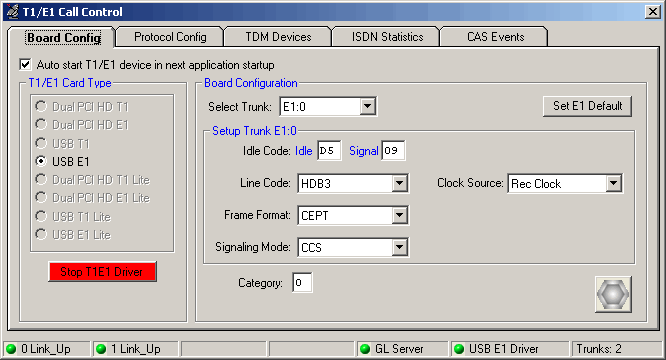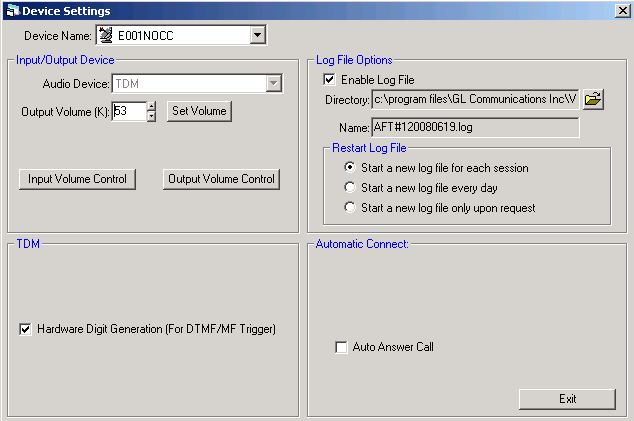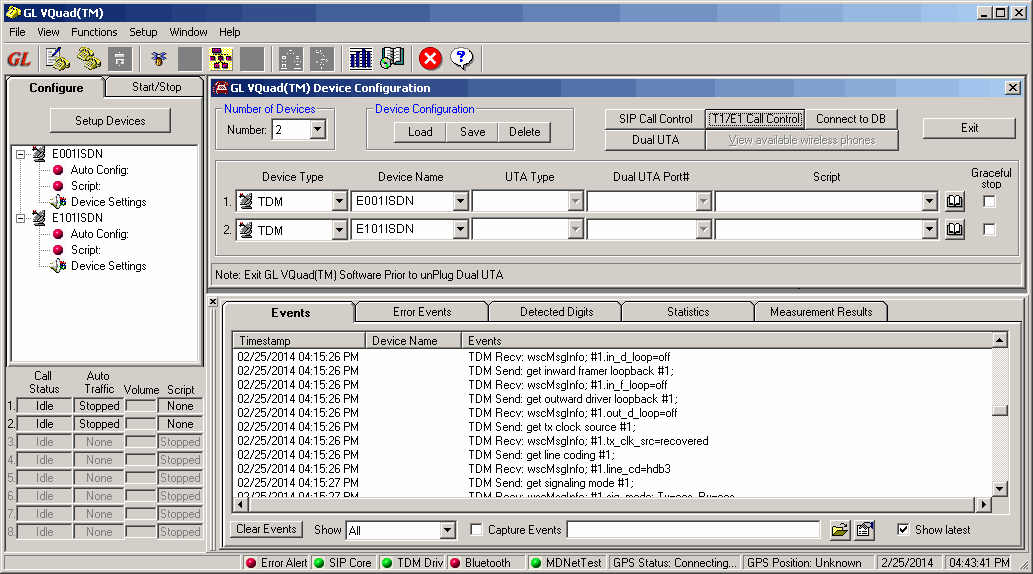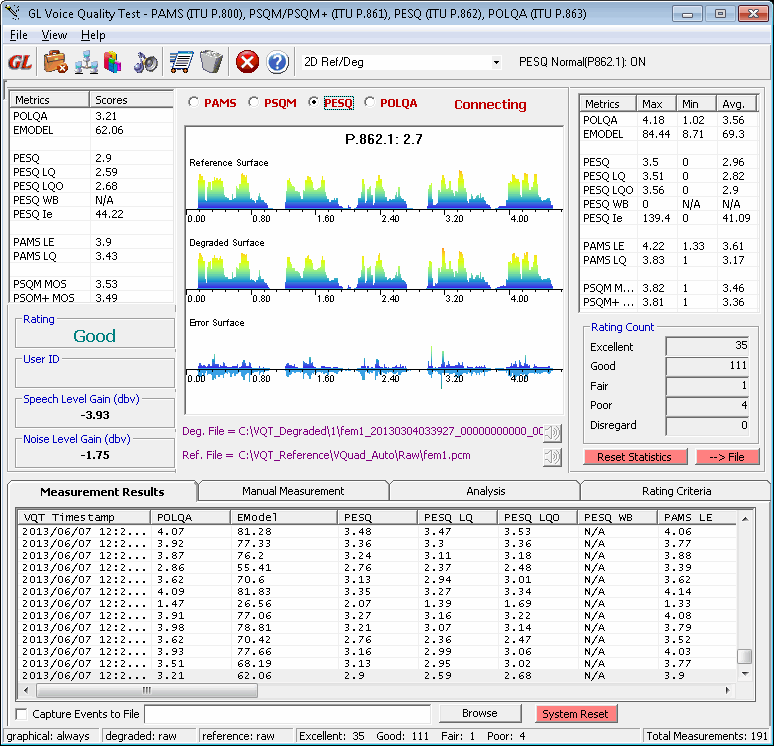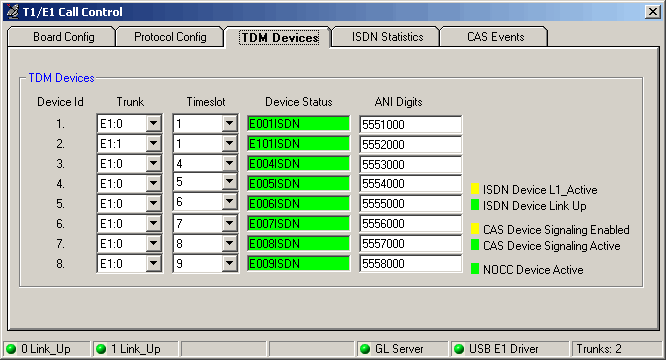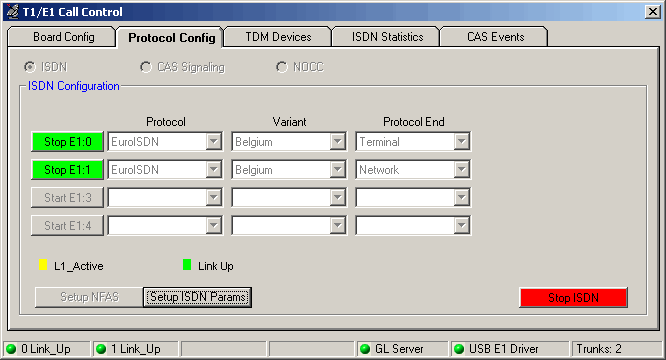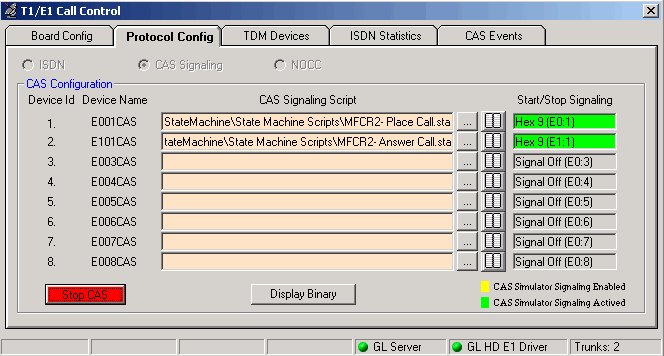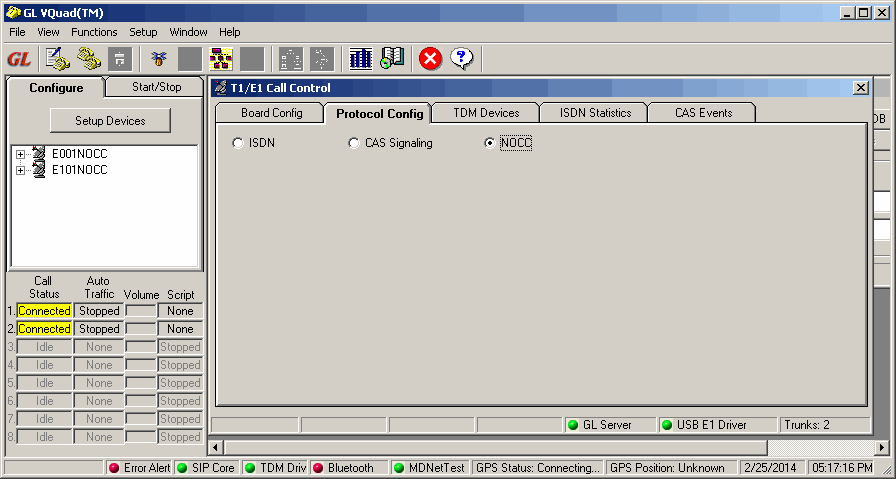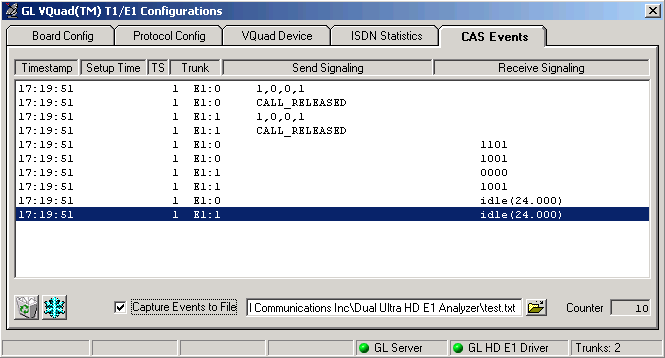Voice Quality Testing in TDM Networks
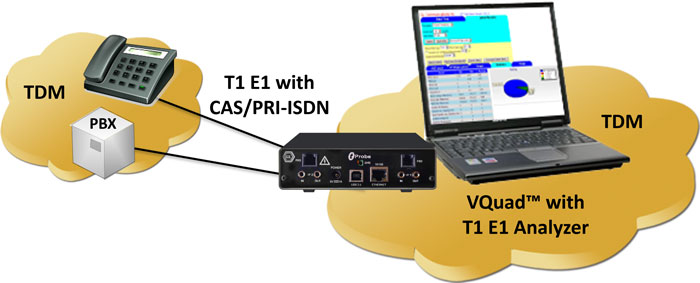
Overview
Voice quality is essential for all Networks as well as Gateways and Switches. Providing the mechanism for VQT over T1 E1 trunks is essential. The VQuad™ with TDM option provides the ability to perform manual or automated tests on the T1 E1 networks. The GL VQuad™ software combined with GL's Voice Quality Testing (VQT) software permits this desired VQT testing, yielding results that include PESQ (LQ/LQO/WB) and POLQA Mean Opinion Scores (MOS). These results provide an excellent overall measure of voice quality of the equipment under test.
The VQuad™ with TDM option includes the tProbe™ T1 E1 portable analyzer. Using T1 E1 tProbe™ analyzer, VQuad™ can generate and receive up to 8 simultaneous CAS, PRI ISDN, or No Call Control (NOCC) calls on either T1 or E1 trunks. The T1 E1 option includes a script-based CAS State Machine for creating any desired CAS protocol. Included with the PRI ISDN are all variants associated with ANSI and ETSI specifications.
The GL’s VQT utilizes widely accepted algorithms to perform the voice comparisons, the Perceptual Evaluation of Speech Quality (PESQ LQ/LQO/WB) per Rec. P.862.1/P862.2, the POLQA, Perceptual Objective Listening Quality Analysis, based on ITU standard, ITU-T P.863, is the successor of PESQ (ITU-T P.862). PESQ provides an objective measurement of subjective listening tests on telephony systems. POLQA supports the latest HD-quality speech coding and network transport technology, with higher accuracy for 3G, 4G/LTE, 5G and VoIP networks. The VQT performs PESQ and POLQA simultaneously, using two voice files (Reference File and Degraded File) and provides the algorithm results along with analytical results in both graphical and tabular format.
T1 E1 Call Control
VQuad™ allows placing calls in TDM interface. The Setup T1 E1 Call Control is used to configure the Timeslots/ Trunk, Board Configuration, Protocol Configuration, and ANI digits for each trunk. Up to 8 Devices can be configured using T1 E1 Call Control setup option. Within TDM interface ISDN and CAS protocol signaling, and NOCC configurations are supported. CAS signaling protocol can be initialized on different timeslots of each trunk and customize signaling for each channel through CAS scripts. ISDN signaling option can be customized with the type of Protocol End (Subscriber or Switch) for each trunk of the E1 card. NOCC is No Call Control, where in 2 TDM devices get connected automatically without manual interference.
ISDN statistics for Layer1, LAPD and Layer3 are logged. Layer1 statistics includes number of packets sent/received, CRC errors, Internal errors, number of Restarts, Receive Under runs and Transmission Overruns and other details. LADP details include the layer active status and Layer3 details number of active calls. CAS captured events are also logged for the signals sent and received during the Signaling transition.
Main Features
- Connect at endpoint of a TDM network
- Supports up to 8 simultaneous T1 E1 channels using VQuad™ interface Automatic call control CAS, PRI ISDN, or No Call Control (NOCC)
- Automatic call control CAS, PRI ISDN, or No Call Control (NOCC)
- Automatic send/receive of voice files over already established calls
- Time/Digit/Tone triggering of send/receive voice files
- Compact and portable solution for testing end-to-end voice quality
- Synchronized software for sending/recording of voice files at multiple locations
- Flexible architecture and features for recording locations, parameters, and time
- GL VQT Automatic mode allows automatic execution of the VQT algorithms (PESQ, LQ/LQO/WB, POLQA)
- Additional measurements include Clipping, Jitter, Latency, Noise and Signal Levels
- Results available in real-time or post-processing
Screenshots
Additional Information
Resources
Note: PCs which include GL hardware/software require Intel or AMD processors for compliance.
* Specifications are subject to change without notice.
